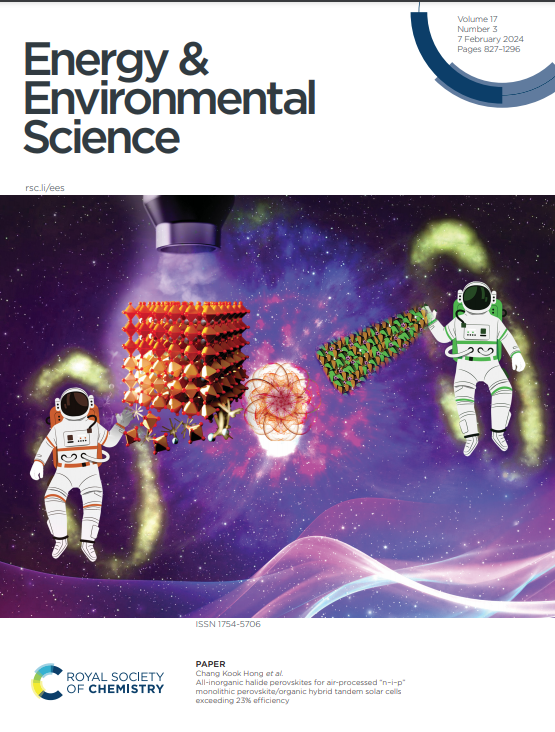Asymmetric RE-O-Ru unit with bridged oxygen vacancies accelerates deprotonation of acidic water oxidation
IF 32.4
1区 材料科学
Q1 CHEMISTRY, MULTIDISCIPLINARY
引用次数: 0
Abstract
Proton exchange membrane water electrolysis (PEMWE) is a promising technology for sustainable hydrogen production; however, the slow deprotonation of oxo-intermediates on RuO2 during the acidic oxygen evolution reaction (OER) limits its long-term stability. Herein, we propose an innovative and effective rare-earth (RE)-mediated strategy to accelerate the deprotonation of OER intermediates on RuO₂ matrix by constructing asymmetric RE-O-Ru structural unit. Taking Sm as a RE model, the incorporation of Sm into RuO2 induces the formation of asymmetric Sm-O-Ru unit with a unique f-p-d electron ladder and an adjacent bridged oxygen vacancy (Ov), which compensates for electron loss in Ru species and creates vacancy-localized electronic perturbation at the bridged Ov due to the delocalization of 4f electrons. The optimized Sm-RuO2-x-Ov catalyst requires an overpotential of only 217 mV at 10 mA cm-2 and operates steadily for over 300 h with a negligible degradation rate of ~27 μV h-1 in acid medium, outperforming Sm-free RuO2 and most other reported Ru-based catalysts. In situ characterization and theoretical analysis demonstrate the constructed asymmetric Sm-O-Ru unit prevents the over-oxidation of Ru species at high voltages and accelerates the *OH deprotonation at the surface oxygen vacancy during OER process, leading to high OER activity and stability. The potential role of asymmetric RE-O-Ru units with bridged Ov is also observed in other RE-doped RuO2 systems (e.g., Nd and Lu), where all catalysts exhibit enhanced deprotonation of oxygenated intermediates. We believe that the RE-mediated strategy presented in this work provides a new pathway for designing highly active and stable noble-metal-based catalysts for acidic water oxidation.求助全文
约1分钟内获得全文
求助全文
来源期刊

Energy & Environmental Science
化学-工程:化工
CiteScore
50.50
自引率
2.20%
发文量
349
审稿时长
2.2 months
期刊介绍:
Energy & Environmental Science, a peer-reviewed scientific journal, publishes original research and review articles covering interdisciplinary topics in the (bio)chemical and (bio)physical sciences, as well as chemical engineering disciplines. Published monthly by the Royal Society of Chemistry (RSC), a not-for-profit publisher, Energy & Environmental Science is recognized as a leading journal. It boasts an impressive impact factor of 8.500 as of 2009, ranking 8th among 140 journals in the category "Chemistry, Multidisciplinary," second among 71 journals in "Energy & Fuels," second among 128 journals in "Engineering, Chemical," and first among 181 scientific journals in "Environmental Sciences."
Energy & Environmental Science publishes various types of articles, including Research Papers (original scientific work), Review Articles, Perspectives, and Minireviews (feature review-type articles of broad interest), Communications (original scientific work of an urgent nature), Opinions (personal, often speculative viewpoints or hypotheses on current topics), and Analysis Articles (in-depth examination of energy-related issues).
 求助内容:
求助内容: 应助结果提醒方式:
应助结果提醒方式:


